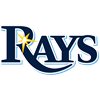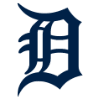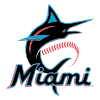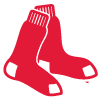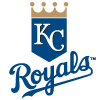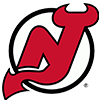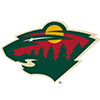-----Original Message-----
From: Christopher Liss
Sent: Thursday, August 1, 2013 5:08pm
To: Jeff Erickson
Subject: Charging
It's August 1, which means we're two-thirds of the way through the season - still tons of time for your first-place teams to collapse or for your fifth-place one to make an epic run, but realistically the teams that are in the bottom half, that never got going probably aren't going to make it, Which means it's time to reflect on what went wrong.
If I look at my NL Tout team, chock full of ace pitchers - I drafted Stephen Strasburg, Shelby Miller, Hyun-Jin Ryu and Jeff Samardzija (who I traded) and FAAB'd Jose Fernandez and Tony Cingrani and see I got unlucky in wins and didn't buy enough saves (Rafael Betancourt, K-Rod in FAAB). But I have 12's in Ks, ERA and WHIP, so I got enough pitching points, considering how modestly I spent on it. It was the hitting that went south, with Giancarlo Stanton and Bryce Harper simply not delivering on their lofty price tags and prospects Oscar Taveras and Billy Hamilton amounting to a waste of $17. Paying $16 for Juan Pierre's steals was also a bad investment. On the one hand, it was obvious he didn't fit on that rebuilding team, but on the other he's always managed to siphon playing time from the more deserving, and I just assumed he would blind management into sticking with him somehow.
But notwithstanding the bad
-----Original Message-----
From: Christopher Liss
Sent: Thursday, August 1, 2013 5:08pm
To: Jeff Erickson
Subject: Charging
It's August 1, which means we're two-thirds of the way through the season - still tons of time for your first-place teams to collapse or for your fifth-place one to make an epic run, but realistically the teams that are in the bottom half, that never got going probably aren't going to make it, Which means it's time to reflect on what went wrong.
If I look at my NL Tout team, chock full of ace pitchers - I drafted Stephen Strasburg, Shelby Miller, Hyun-Jin Ryu and Jeff Samardzija (who I traded) and FAAB'd Jose Fernandez and Tony Cingrani and see I got unlucky in wins and didn't buy enough saves (Rafael Betancourt, K-Rod in FAAB). But I have 12's in Ks, ERA and WHIP, so I got enough pitching points, considering how modestly I spent on it. It was the hitting that went south, with Giancarlo Stanton and Bryce Harper simply not delivering on their lofty price tags and prospects Oscar Taveras and Billy Hamilton amounting to a waste of $17. Paying $16 for Juan Pierre's steals was also a bad investment. On the one hand, it was obvious he didn't fit on that rebuilding team, but on the other he's always managed to siphon playing time from the more deserving, and I just assumed he would blind management into sticking with him somehow.
But notwithstanding the bad buy of Pierre, the bad luck with Taveras and the relative good luck with players like A.J. Pollock, Brian McCann and Troy Tulowitzki (despite his injury, he's on pace to earn what I paid), the keys to my downfall were Stanton and Harper who have 69 RBI between them. On the one hand, their injuries could be considered bad luck, but on the other maybe those weren't the right guys in whom to invest first-round dollars. How could I have known that in advance? For one thing, Harper is only 20, and Stanton is 23. Stanton once played 150 games as a 21-year old but had only 123 last year. Harper played 139 major league games as a 19-year old (and 21 in Triple-A), but he's basically an idiot (Probably 75 percent as much of an idiot as I was at 20).
Young players are at their peak of athleticism and talent, but at the nadir of their understanding not only of what it takes to be consistently good, but also what it takes to stay healthy over a full season. They haven't figured out what balls you should dive for, when you should pull up as you near the fence, how to prepare for the longer grind than that to which they're accustomed. A frustrated Stanton tore his hamstring legging out a ground ball for a hopelessly terrible Marlins team - I doubt the 26-year old version of him is going to do that. Harper crashed into the wall and tried to play through a resulting knee injury, something again I don't think he'd do a few years from now. The risk one runs with great young players isn't so much that they'll be overmatched, but more that they don't have the wisdom yet to pace themselves properly. While Mike Trout seems to be an obvious exception (some players are not only talented, but poised and smart before their times), take a look at the 26-28 year-old hitters having strong seasons:
Chris Davis (27)
Carlos Gomez (27)
Carlos Gonzalez (27)
Andrew McCutchen (26)
Jason Kipnis (26)
Adam Jones (28)
Buster Posey (26)
Jay Bruce (26)
Troy Tulowitzki (28)
Josh Donaldson (27)
Ian Desmond (27)
The major-league growth arc for hitters is well known at this point, but sometimes I think we misunderstand the reasons for it. Just as I think players decline with age not some much because their skills erode but because they get injured more often and recover more slowly and are therefore constantly playing through them. They also have to work so much harder to stay in shape and avoid them, and at some point the effort to keep playing isn't worth it, so they hang it up.
But the same problem occurs at younger ages too, perhaps, with players not having found the balance between the ease of youth and the work habits of a professional. For that reason, while there was no reason to doubt Harper's or Stanton's skills heading into this year, perhaps I should have been concerned about their ability to play at peak health for the entire year.
Maybe next year - if I'm going to pony up for stars in NL LABR - and elsewhere - I'll target guys in that age 26-28 sweet spot like Paul Goldschmidt and Domonic Brown. It might even be worth dropping a few bucks on Brandon Belt who will be 26. And not because I think they'll necessarily perform better on a per-at-bat basis, but because they'll stay in the lineup.
-----Original Message-----
From: Jeff Erickson
Sent: Friday, August 2, 2013 2:41am
To: Christopher Liss
Subject: RE: Charging
My NFBC Main Event team is a disaster, so I'll apply the post-mortem analysis to that team. We'll start off with your young players problem - I overdrafted Jedd Gyorko and Jurickson Profar, much to my detriment. Gyorko at least had a stretch where he was hitting well, but he also took forever to get there, and has since gone into the tank. Profar got called up on schedule and stayed on the big league roster, but he hasn't done a whole lot when he's played, and his playing time has been sporadic to boot. I got caught up in Trout/Harper/Machado fever and took those guys a couple of rounds early in each case.
But my big mistake was undervaluing batting average, and that's one I rarely make. But between drafting such batting average sinks like B.J. Upton, Pedro Alvarez, Justin Smoak, Cameron Maybin and Danny Espinosa, and then seeing my theoretical batting average counter-weights like Melky Cabrera and especially Miguel Montero fall short, it's been nothing sort of a disaster. Nearly every single gamble that I took in that league failed, too - Adam Eaton, Jason Motte, Profar ... it's been one gigantic mess. My drafting strategy was divergent from previous NFBC drafts, I tried too much to zig when the rest of the draft zagged, and it all became a flaming bag of poo on my doorstep.
Let's go back to you, specifically the notion of getting guys at the right age. Obviously targeting age-27 guys is nothing new - Roger Anderson got a lot of pub in Baseball Weekly for advancing that notion back in 1997, in our first year of business as RotoNews. I think that the steroid era threw us off of conventional age curve analysis, maybe we're heading back in that direction? Your point about the wisdom of preserving one's body while still being capable of performing at peak output rings true to me. Also, it's a matter of being able to recognize patterns in the game - from reading pitches, knowing how teams pitch to you and how to react to that, while still being able to fully respond without injuries or aging getting in the way.
Unfortunately, maybe your opponents haven't really thought the issue through as much as you have, but those age 26-29 guys are still in the highest demand nonetheless, so it's harder to find bargains among that lot. You need to find those in that age group that haven't yet emerged - but that's also pretty obvious. Your guy Justin Smoak strikes me as maybe a good target - over the last 30 days he's hitting .286/.375/.500, he's 26 years old now, and the park isn't quite as punitive as it's been in years past. Who else fits under that broad penumbra?
From: Christopher Liss
Date: August 2, 2013 12:37:59 AM PDT
To: Jeff Erickson
Subject: Re: Charging
Players like Smoak, Belt and Dustin Ackley all qualify though they'll have to hit well enough to keep their jobs early on, and their parks are not doing them any favors. I think the better bet are the Domonic Browns - he'll be 26, and he's more like Carlos Gomez or Chris Davis building on his first level breakout. Goldschmidt's price tag will be early-to-mid first round, but even so, there's nothing wrong with getting that for which you paid. In fact, on average players do not live up to their ADPs because undrafted (and low-drafted) players take some of those spots. Collectively, there's a net failure from the pool of drafted players, especially in the top rounds where half won't even come close to earning their value. So paying $37 for a 26-year old star that goes 35-120-100-15-.300 is good for your team.
I've also been guilty of trying too hard to zig when others zag - both in MLB and NFL - and it's sometimes cost me. On the one hand, it's good to be open minded and consider different possibilities - even dumb ones - but you don't have actually go through with it. I suggested in our video that maybe drafting a first-round QB makes sense, because you don't have to have the best team, just one good enough to make the playoffs, and top QBs have the least risk, but that's just something to consider. While I abhor the limited thinking that says you always have to do "x" in a certain case and "y" in another case maybe I rebel against that too much and am actually allowing myself to be influenced by it in doing the opposite. It's better to ignore it altogether and do what's best for your squad whether it's incredibly creative or totally obvious and boring. I've wanted not only to win, but to do so with some flair, and while it can make for good radio, I think it's adding a degree of difficulty that's too hard consistently to overcome.
The same goes for fading the hype on players everyone's talking up in the industry. Don't fall for the hype, and don't fade it. Just ignore it and try to stay focused on the facts.
Finally, I did load up on the same players on all of my squads, and that lack of diversity has hurt them because Stanton and Harper have struggled so much, but I don't think that's a flaw, and I will continue to do that going forward - only with the right players.
-----Original Message-----
From: Jeff Erickson
Sent: Sunday, August 4, 2013 3:26am
To: Christopher Liss
Subject: RE: Charging
I like that term - first-level breakout - and what it implies. You're absolutely right - typically those guys aren't priced up enough, at least at the right age, perhaps because of the rigid adherence to the regression model. Jose Bautista comes to mind as the canonical example, not just because of the amplitude of his breakout, but also why we missed. If we didn't see it coming in the first place, collectively as an industry, then damn, it must have been a fluke - right? That same mindset cost me the chance to acquire Carlos Gomez this year, too.
I also agree that paying full price on an elite player is the new profit. If it's harder to find bargains, it's also harder to identify $35 players that actually earn $35. Even if you don't get an accounting profit, at the end of the day you're still getting $35 worth of production, which gets you well on the way.
It's great to be a contrarian, as long as you're not doing it dogmatically.









